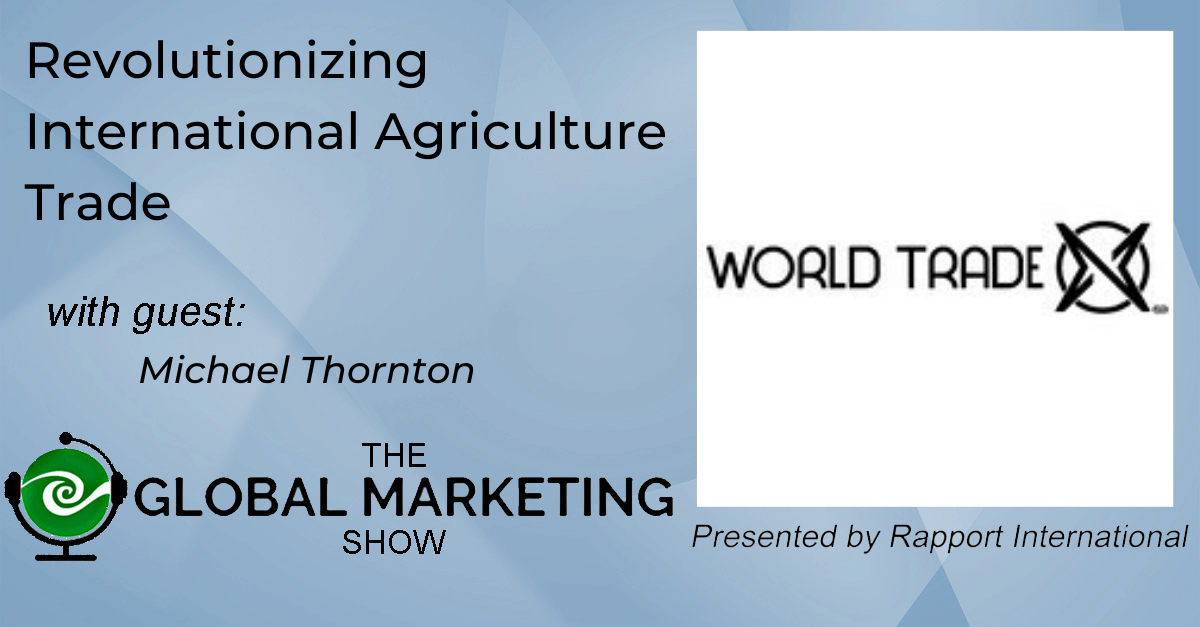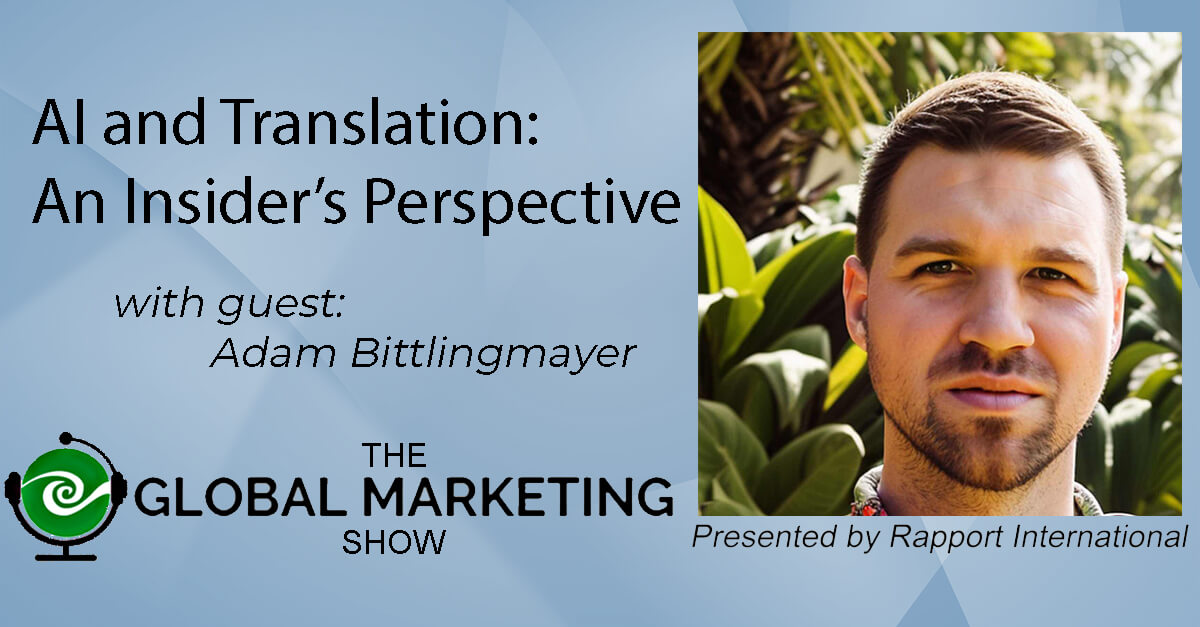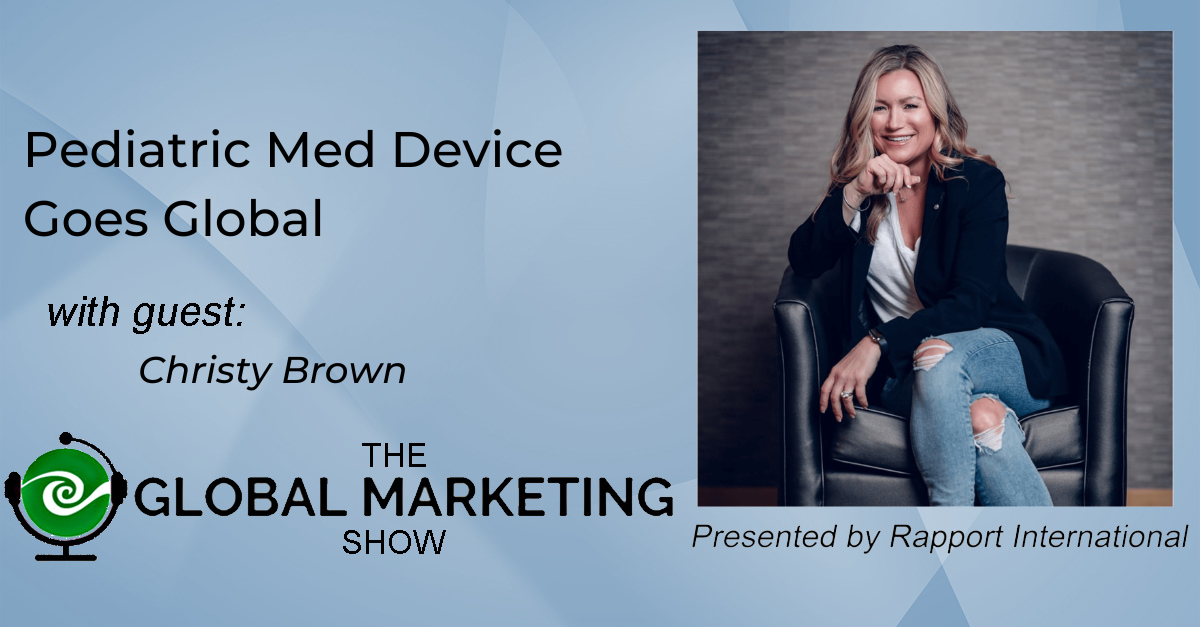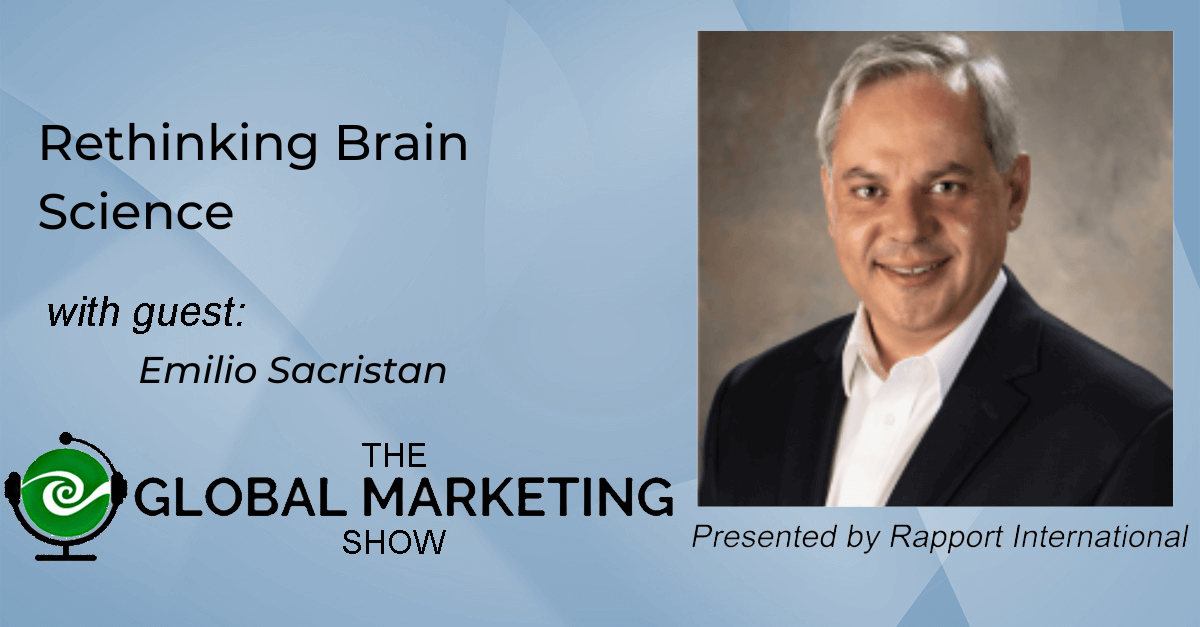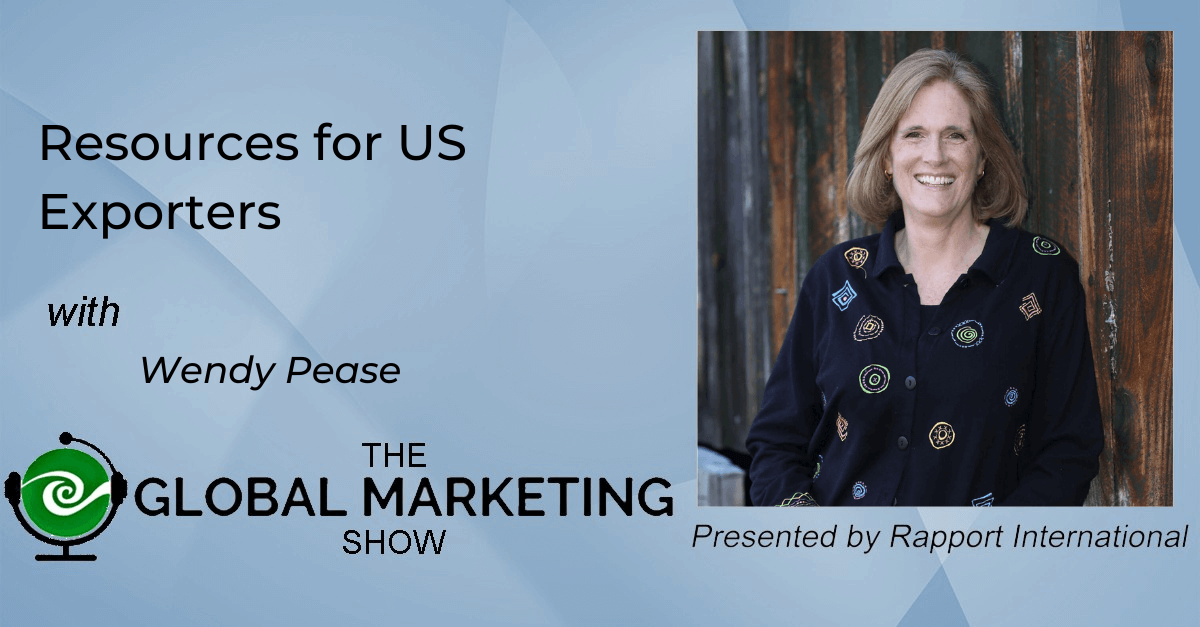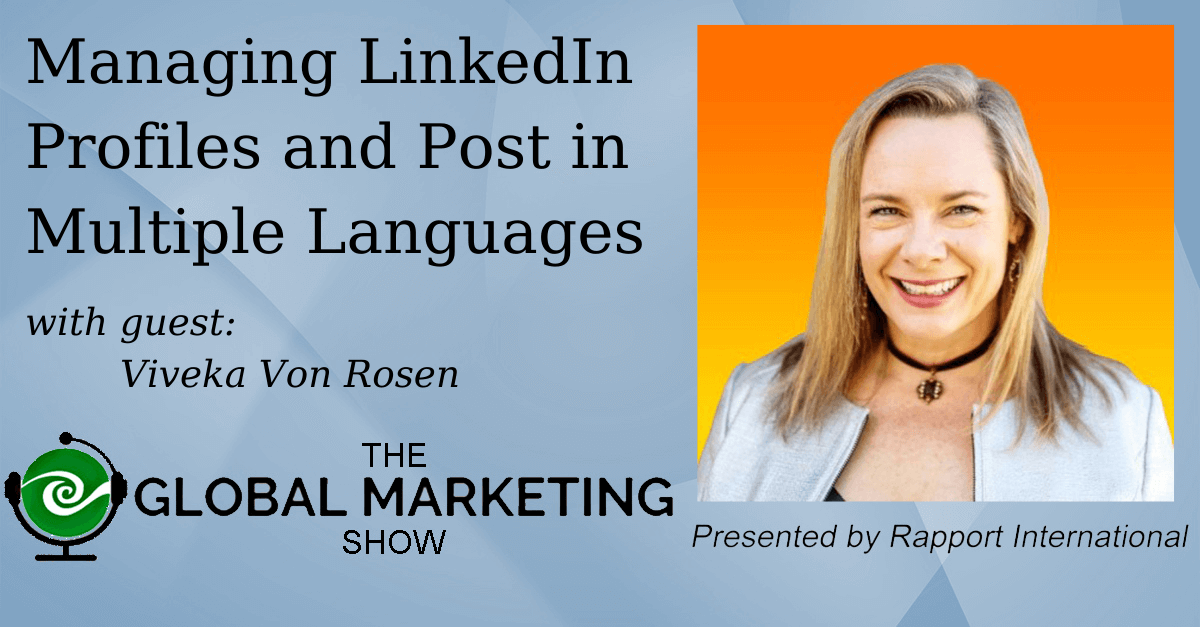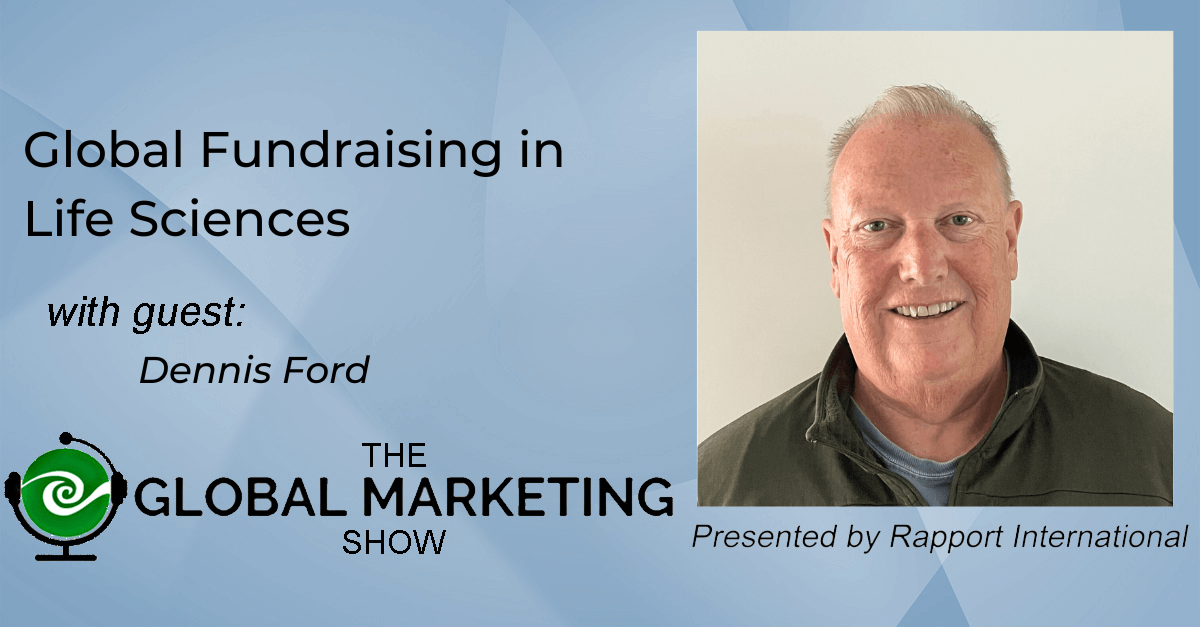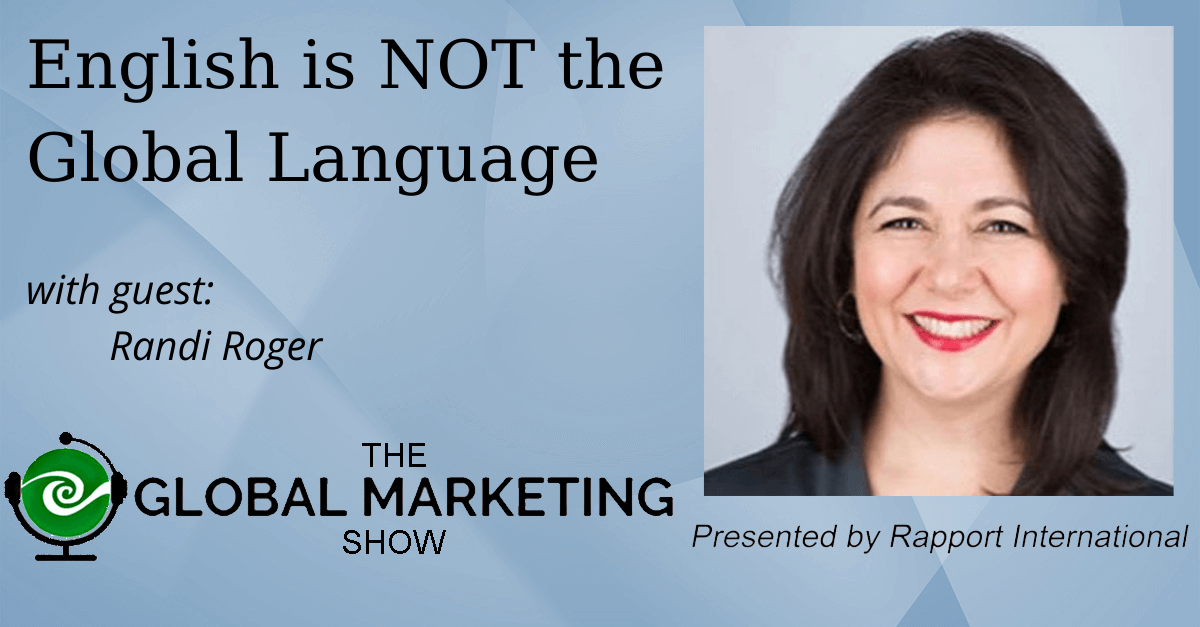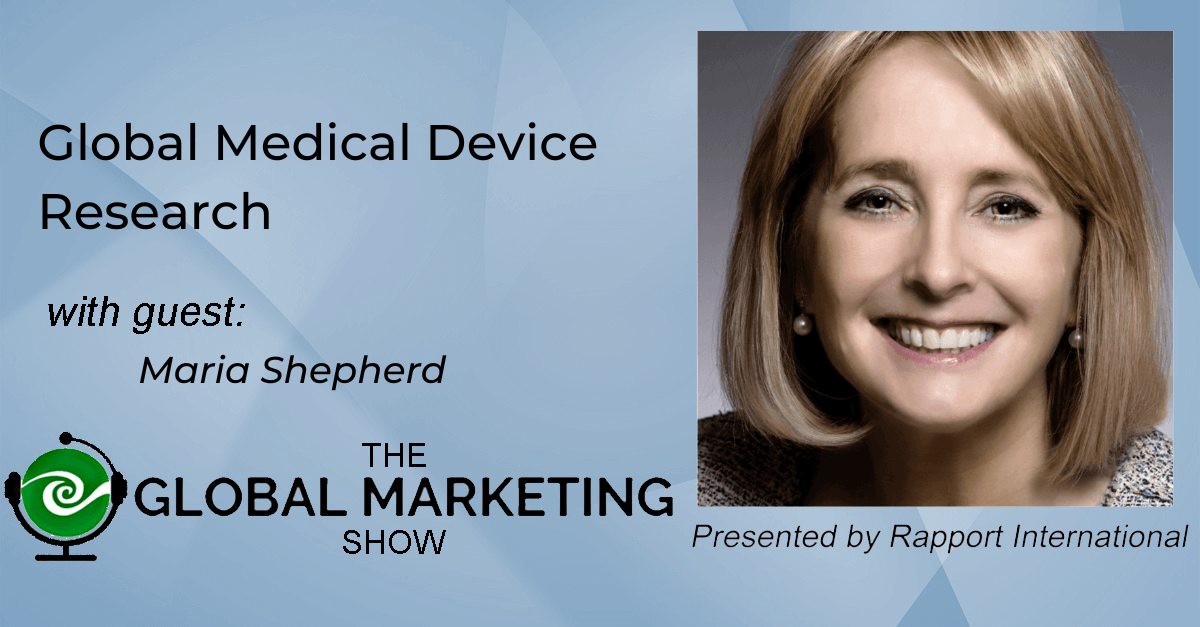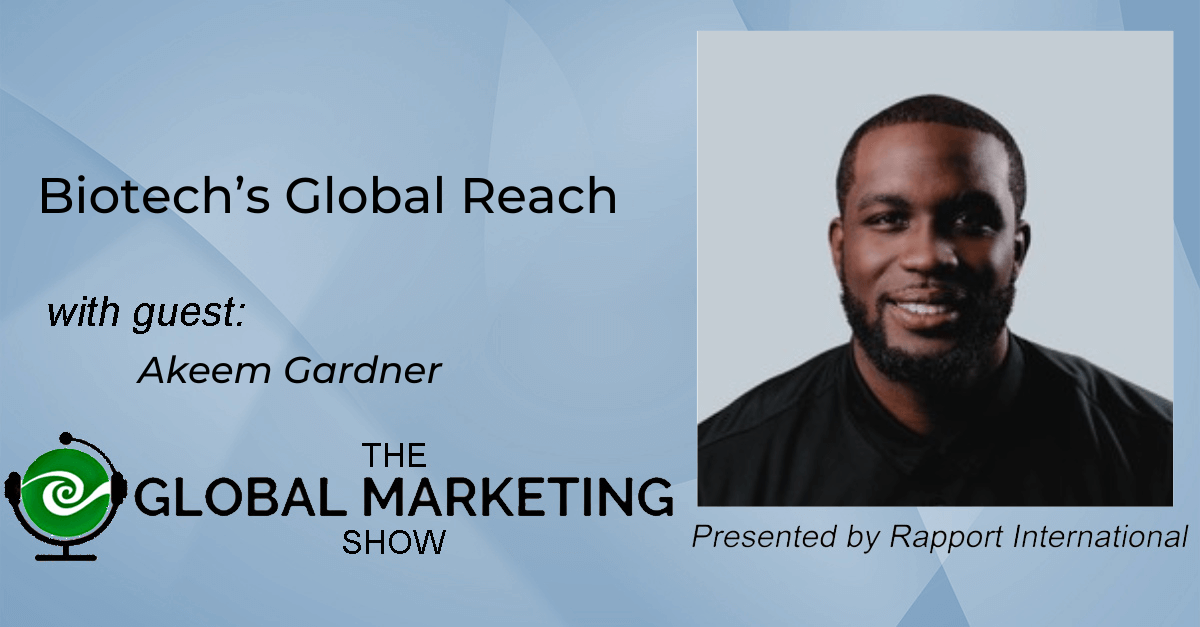Adam Bittlingmayer is CEO and co-founder of ModelFront, a language services technology company striving to “make high-quality human translation radically more efficient” for large enterprises. The ModelFront API helps translators and language services agencies quickly determine the quality of machine-translated content, analyzing content segments for accuracy; with AI and human guidance, the technology’s ability to “predict” quality continues to improve over time.
Adam is an industry expert on automated translation - before co-founding the leading provider of machine translation quality prediction, he worked at Google Translate as an engineer, and founded Machine Translate, the foundation for open information and community for machine translation. Google Translate “makes bad translation free,” he says, adding that because most people can’t access translation the service is great for humanity, but not dependable for high-quality translation.
None of this is new to the language services industry, which has embraced machine translation from the outset. In this episode, Adam and I discuss AI, generative AI technologies like ChatGPT, and the technology’s general unreadiness for quality translation right now. AI-powered technologies are clearly and quickly redefining our concept of the future – what has changed is how we in the industry think about quality and client expectations in relation to potential (or perceived) time- and cost savings.
|
Adam also lays out a framework to help you decide what type of translation method works best, based on the value and uniqueness of content. Content with the highest “value” impacts a company’s revenue, brand reputation, and legal obligations and still requires human translation.
That need for quality will always be there, he says, even as the quality of AI translation improves. To keep up and stay relevant, the menu of services LSPs offer (and the methods they employ) will have to change, as the demand for services will likewise increase as the capacity to scale becomes greater.
Adam and I agree that there exist extremist viewpoints on whether technology will take over jobs from humans. To maintain a balanced discussion on the topic – he comes from the technological side and I come from the human side – we also agreed that ensuring the quality of any translation project currently requires both technology and humans.
Listen to the full episode to hear more from both perspectives and find out where they coalesce and collide. In addition, we discuss:
- LangOps strategies for larger enterprises.
- How language services agencies manage LangOps for SMEs.
- The impact of technology on translation automation.
- The role of ChatGPT in translations and confidentiality issues.
- Best practices around hybrid approaches to translation.
- New and changing translator skillsets.
Links:
Website: www.modelfront.com
LinkedIn: https://www.linkedin.com/in/bittlingmayer/
Email: adam@modelfront.com
Connect with Wendy: https://www.linkedin.com/in/wendypease/
Music: Fiddle-De-Dee by Shane Ivers https://www.silvermansound.com
ATTENTION: Below is a machine-generated transcription of the podcast. Yes, here at Rapport International we talk a lot about how machine translation lacks quality. Here you see an example of what a machine can do in your own language. This transcription is provided as a gist and to give time indicators to find a topic of interest.
[00:00:34] Wendy: Welcome my friends to another episode of the Global Marketing Show Podcast, where oftentimes I ask people about translation because it's fascinating!
[00:00:46] And were brought to you by Rapport International, who provides foreign language translation in over 200 languages. And of course, there's a huge learning center on the Rapport International website. If you have anything that you wanna learn about in languages and cultures, you just go to the website and search for it, and you'll catch a video or a good article about it. If you don't find it, let me know and I'll get back to their marketing department and have them create some content on that.
[00:01:18] So you know if you've listened to the show before that Rapport International brings us a tidbit, and today's tidbit is about translation. Do you know what document holds the world's record for being translated into the most languages? Well, this is the Universal Declaration of Human Rights. It's a six page document created by the UN in 1948 in response to experiences in World War II, and it won the Guinness Book World Record, in 2009 being by being translated into 370 languages and dialects! Wow!
[00:02:05] That's such a perfect one for today's guest, Adam Bittlingmayer. He is currently CEO and co-founder of ModelFront, and they're a leading provider of machine translation. Quality prediction, which is basically an AI for more efficient human translation. Previously he was an engineer at Google Translate, and he speaks eight languages and he says none of them well but I have to argue that cuz I've talked to him. And I absolutely love it, he says he's not a tech guy even though he's mired in Google Translate and technology for translation, he says he is a language guy at heart.
[00:02:48] So Adam, welcome so much to The Global Marketing Show!
[00:02:52] Adam: Thanks, Wendy, great to be on here.
[00:02:55] Wendy: Yeah, so I told you in advance that we're gonna ask you for your favorite form word at the end. So I am so looking forward to that. But before we get into it, why don't you tell us a little bit about what you're doing now at ModelFront?
[00:03:09] Adam: Well, real simple. So yeah, if you kind of look, look back what, what I participated in at Google, we sort of ended up between Google Translate and Chrome and, and Android. Where I'd worked before, we, we sort of made bad translation free for most of humanity, right? So machine translation is now something that a few billion people on Earth had access to.
[00:03:32] Wait
[00:03:32] Wendy: a minute, wait a minute. So you just said you worked at Google Translate to make bad translation free.
[00:03:39] Adam: I mean, that's what we, that was the net effect of it, right? Which is a great thing, I mean, In the translation industry, in the human translation industry, it's, it's fun to make fun of that.
[00:03:49] But the reality is, for most of the people on Earth, it's the difference between no translation, or a bad translation. And a bad translation is better than no translation. And, 95% of the content is not accessible to those people, right? So I'm very proud of that. I think it's a great thing for humanity, and they've continued to do that without me, added many more languages, a lot more people online.
[00:04:14] Right, that's all really cool but I want to contrast that with what we do at ModelFront. Instead of making, sort of, good enough, or, not so great translation really accessible to billions of people. At ModelFront we're sort of at the other end of the spectrum, trying to make high quality human translation radically more efficient, right?
[00:04:35] So keeping the same quality. What can we do to make it more efficient? And if you look at the high volume, Post editing workflows today, or the high volume human translation workflows, those are PostIt editing workflows. Right? First, it goes to the TMS, it's going to Microsoft or Custom Ciran or Google Translator.
[00:04:55] Wendy: Okay. You gotta slow that down because, the listeners are global marketers and so they're not translation experts. So I got all those acronyms that you said, but could you break that
[00:05:05] Adam: down?
[00:05:05] Right. Okay. Okay. So if you are a big computer company or a, big, fashion marketplace today, and you have to translate millions of words, or usually hundreds of millions of words the way that you do it is instead of translating from scratch, you first machine translate, and then you send that off to human translators or human translation agencies. And it turns out that a good fraction of the sentences, often about 50%, in many cases, up to 90% of the segments that are going out for translation of the machine, automatic translation that are going out for translation are getting looked at, but are being left unedited.
[00:05:54] Meaning that the professional human translators whose task is to fix the machine translations, decided that roughly 90% of the segments are actually good enough without changing a single character. And so that's where we come in basically, ModelFront comes in to predict which segments don't require any editing.
[00:06:19] So that folks can focus on those segments, those sentences which do require editing and, hopefully also increase the amount of, content that they can translate, the amount of languages that they can translate into, thanks to this new efficiency.
[00:06:38] Wendy: Okay. And so you started it out with it with, it was big computer companies or big like fashion marketplaces, so I understand the use for it there just because they're doing so much content, and a lot of it can be very regulated or very pattern wise. What other industries do you see this working in or places?
[00:07:03] Adam: You're very right, that the automation is always the best fit for, where there's volume and, and things are very repetitive and so on. So the other places that have that tend to be customer support, e-learning material, certain types of marketing material...
[00:07:21]
[00:07:21] What kind of marketing material?
[00:07:23] Marketing material that tends to, a lot of times we call it marketing material because it's from the marketing department, but it's actually closer to technical documentation. Okay. Or it's, it's somehow not very original. And then a lot of stuff in manufacturing or automotive. It's pretty similar to what you have on in the technology companies.
[00:07:47] It's again, manuals are basically tech docs for, for
[00:07:51] Wendy: hardware. Okay. And why would that stuff work? And how much volume would somebody need to be doing to make that work?
[00:08:04] Adam: So yeah, that stuff works because it's relatively repetitive. It's relatively constrained domain and machine translation is working well there.
[00:08:16] So there's actually a lot of machine translations to approve. And the volumes we're talking about would be something like a 5 million words to, you know, sky's the limit, but let's say 500 million words a year.
[00:08:31] Wendy: Okay, so you're talking high volume.
[00:08:35] Adam: That's true. Yeah. So it's very hard to automate very niche things. Say more on that. Oh, something's, something's very one-off. It's just there's not, it's very hard to justify the initial upfront set up right time and cost.
[00:08:58] Wendy: Right. So there's all this talk now that chat, G p t is gonna handle translation and it's gonna put humans out of business, you know?
[00:09:08] So can you, like when you're talking here, this looks like only very sophisticated users could use the automated translation. You tell me more about where you see G P T or other AI translation fitting in.
[00:09:23] Adam: Right, so, I mean, the first thing to be clear is that patchy pt, right? The underlying technology there is, is the transformer architecture.
[00:09:32] Now, OpenAI did some cool things with data, but the underlying architecture is the transformer. And that actually came out of machine translation. A friend of mine was actually one of the, the co-authors of that paper came out of Google Research Google Brain. Around 2016. And so really you can see chat bt as kind of like what we experienced you, you know, you know, in, in the translation industry from 2016 on now that really rolled out to other areas like monolingual marketing content.
[00:10:08] So I would, I would argue that for translation specifically, not that much has changed. Rather that we were already living in the future. And now all these other areas have caught up. And for the bigger folks especially, nothing has changed because they were already able to get these custom trained models and, and all of that.
[00:10:35] What has maybe changed is the ability of, you know, the proverbial man on the street. To just, you know, go to chat.openai.com and say, Hey, I want a little model that does some very, very niche thing. Right? I just so this kind of long tail stuff got slightly more liable.
[00:11:00] Wendy: Slightly more reliable.
[00:11:02] So can you compare like Google Translate versus chat G P T and what you see and the difference there?
[00:11:09] Adam: Mm-hmm. So, so far the tests say, hey, if you have your sort of enterprise scenario where you have your nicely tuned machine translation model as expected this Chachi pt, which again is very similar architecture but doesn't have your data.
[00:11:26] It, it's not gonna outperform your task specific model. So it's really the fact that, okay, I have a little, you know, some other random problem. Like I'd like to format this data maybe, right? The, the signups for this podcast. I'd like to format those data in, in a tabular format or something like that.
[00:11:47] And all of a sudden, you know, you can get some AI that can try to do that, whereas before you couldn't.
[00:11:54] Wendy: Okay, so that would be in the enterprise. Like I, I have the memory now. I can reformat it through chat g p T, right? If it's nothing confidential, because if it's confidential, you're throwing it out on the marketplace.
[00:12:08] So, so enterprise is benefiting from all this technology. And you said that the, you know, the, there's a little model for niche stuff, but. I'm still not hearing that. That's a good application for, you know, a small, small exporter to go there and do their translation through it.
[00:12:31] Adam: No, I mean, you don't if you require human quality, then it's not right.
[00:12:35] So very, like, very much like what we saw with translation open AI is deceptively fluent. But not very accurate. So I think the best way to sort of prove that to yourself is take some subject that you know, but that's maybe not super written about on the internet yet. Right? So for an example just putting in our own company's name, say, Hey what does Model Front do?
[00:13:06] And at least last time I checked, which was a few months ago the answer was totally wrong. Right, right. Yeah. Um, or yeah, or you know, who is Wendy? Peace, right? Yes.
[00:13:20] Wendy: Yeah. I told you that story about my marketing person put in, who's Wendy? Peace. Sorry. We don't know enough. She's in the translation industry.
[00:13:28] They came back with a whole profile that was wrong, and it attributed a book to me that I didn't write, or attributed awards to me that I didn't win. So, I mean, It was wrong. Just wrong. Right, right. Uhhuh, so you you've wor you've lived a lot in machine translation and you know, I go out. To look at some of the machine translation companies and they're talking about 98% accuracy and you can do this this is gonna change the world.
[00:14:00] Like I hear that a lot. And then I also hear, you know, human translator saying it's just not there. Can you talk to me about some of this extremism and where you see the market mm-hmm. Kind of shake out,
[00:14:13] Adam: right? Yeah. So right now I do see polarization. Which is you know, your typical, large organization could be whether it's corporate or, or an international organization.
[00:14:27] You see, on the one hand, the folks in the translation department who basically hate machine translation and they don't even want to post, edit it in some, in some cases refuse to post edit. And on the other hand, huge economic pressures, right? A lot of budget cuts right now. And combined with the news about AI and the fact that execs can go try, you know, chat sheet pt, which is a very impressive product, right?
[00:14:57] It's very, it, it makes a great impression. And so, so you see that translation teams are kind of squeezed between these two things. And I should mention one more factor, which is that if the translation department does not provide, In an enterprise, right, or, or international org. If that translation department does not provide reasonably fast and cost efficient service, then people just go throw stuff into Deep L and Google Translate and Chat.
[00:15:27] J p t So and, banning it just drives it underground, so to speak. So you, these are kind of two extremes. One is you know, everything must be artisan Manuel, right? It's got of as if it's, you know, some sort of fancy cheese right on the one hand. And on the other hand, you have people who just, you know just.
[00:15:49] Raw, empty everything. And, you know, nothing matters. And right. And, and both of these things in, in my view are kind of crazy or only make sense in very few scenarios. But most of us live in, in reality. And we want decent quality. We don't want terrible translations. We also have to think about costs and scale, right?
[00:16:11] And so Yeah, we, we, we, we need something kind of in the middle and not just sort of you know, between those two in terms of, in terms of quality and cost, but ideally, sort of the best of the two, right? Where we get most of the benefit of machine translation and most of the benefit of, of human translation.
[00:16:31] Wendy: Yeah, that's, I think I was telling you that I wrote a book called The Language of Global Marketing, and in there there's a chapter about what to translate. And so rather doing the either or I think a company would be well served to develop a Lang Lang ops. It's being called in the industry of. How to handle that.
[00:16:50] So you clearly identify what can be machine, what could be chat, G P T, what could be deep l and what needs post-it editing, and then what needs human. Mm-hmm. And so if you have clarity on that in your company, then people would know where to turn and what to expect. But I don't, I don't see that happening at all.
[00:17:13] Well,
[00:17:14] Adam: There's. I'd say two, two ways in which it happens. So there's, there's sort of two two sides to this coin. So the first thing is the value. So like different pieces of text have a different value. Sometimes it's hard for people. It's, it's almost like this anti egalitarian thing, but it's like, no, like this document is more important than doc.
[00:17:37] That document, this document sells more. The title is more important than the description. It, it gets more eyeballs. Right? And a top selling product gets more eyeballs than, than a not top selling product. And this is, this is a really one hard one to say. This language is more important than that language, cuz you're, you know, that's, that's very hard to say.
[00:18:01] But if you don't start making decisions like that, it means that some languages are not gonna get translated at all because you won't have any money. Right. So So this value side, and I, I think that the value has to come, like this value equation, if you want to call it, that really has to come from the customer and, and and from, from the LSPs and from the TMSs, from the whole system, right?
[00:18:28] To say, Hey, like this sentence is worth more than this other sentence. Because it is. And if you don't, if you don't do that, if you just do this one size fits all approach, then you're gonna be spending resources very efficiently. So, like, this could be as simple as, Hey, for this, for this sentence, we're gonna have translation, editing, and proofreading.
[00:18:49] And for this other sentence, we're only gonna have translation, right? So no, nothing to do with ai, but like, just, just this Just this recognition that like some things are worth more than other things,
[00:19:01] Wendy: By segment or by sentence? I would do it by category of, of materials,
[00:19:08] Adam: right? So the, the typical approach is by category of materials.
[00:19:11] But the thing is, when you do that, it's, it's this very crude sort of instrument, right? You're saying, Hey, like all marketing is worth more than all technical docs or whatever, right? And it's like, well, not really, right? This, if you can get more fine grain than that, you can get more efficiency. Because basically, yeah.
[00:19:30] Oh,
[00:19:30] Wendy: you'd have to get more fine grain with that. I mean, I, I just recorded a podcast where we were talking about that when they're entering a new market, if they have five prospects, then they translate the sales materials. Once they get a sale, they add content to the web. I was like, well, you could reuse the content from the sales material on the web.
[00:19:49] And he went, oh, brilliant. But, but you know, there's metrics. You could, I mean, it would take. A focused attention, but you'd have to break down just in the marketing material, what would be more important language be by market size. Technical documentation is by liability and by, you know, a product sales side.
[00:20:10] I mean, there's, there's lots of ways to break that down according to each company and their
[00:20:16] Adam: needs. And you, you, you could have Google Analytics on your webpage or some kind of measurement of the page views too. So you can, it can be sort of live updating. Okay. So that's the one side. Yes. Which is, Hey, how much is this segment worth?
[00:20:33] Even within the document, if you want to get fancy Uhhuh and the other side is okay. If we, if we did a machine translation, pret translation first, how good is this machine translation versus how much does it need editing? Right. So, oh, right. So these are the two things. Hey is it valuable and is it in need of editing?
[00:20:56] Right? So if it's not valuable or if it's already good, in either case, it's not worth wasting a person's time.
[00:21:07] Wendy: Yes. We're leaning more towards that now. Is running a part of a larger document through the machine or the machine translation, looking at the quality and having. The, the expert linguist or the translator look at it and say, yeah, this is good enough.
[00:21:27] I could work with this and edit it to make it high quality. And sometimes they'll come back and they'll say, no, it's not good enough. I need to start from scratch. But it's interesting too, because oftentimes the cost doesn't cha change. It's just the, where the burden of the work falls because you still need an expert in the loop.
[00:21:50] To do the review, the first review, because if that machine translation changes the meaning and the person doesn't know, they know the two language pairs, but they don't know the content, they can Ms. Key mistakes that the machine translation did. Sure. Yeah. And then you've gotta have another editor on it to make sure it's just grammar and everything.
[00:22:16] Correct. Which would be. So it saves time,
[00:22:22] Adam: right? I mean, that was in some sense why we decided to found Model Front was really sort of looking at this process, right? Where you say, Hey I, if I'm a translator and I'm, my job is not to post edit, to review machine translations. It just like, if I have to review, you know, chat, pt, output it doesn't necessarily make me that much faster if I still have to review every segment.
[00:22:48] Right. Um, right. So in, in a sense, the translators were right, that if I have to review something, even if I decide not to edit, that cognitive effort was most of the effort, right? Yeah. And it didn't really save anybody, anything. You know, we're talking of marginal savings from post editing. And, and, and now I'm talking in my book here, but that's, that's where an automatic quality score comes in, where, you know, you're able to say, Hey, this stuff you really don't need to look at, cuz it's been translated and approved by you and your team a lot already.
[00:23:25] At least something very similar to this has. So that's as, as I see it, the only way that, that's where the waste was. And now, Quality prediction became the only way to really get the juice of of machine translation in a human quality translation workflow. So
[00:23:45] Wendy: what's the difference between using A T M S translation memory?
[00:23:52] Software or system, whichever way you define it, to get the like a hundred percent match or 80% match. I mean, that's basically what model front is doing. Saying if it's been approved a bunch of times, you've got a hundred percent match.
[00:24:08] Adam: It's very similar. It's very similar in terms of it's let's say yes, the, the application in terms of the impact, the efficiencies The risks, if you wanna call it that.
[00:24:19] There, there's a key difference. So a translation memory right, is basically saying, Hey, if we've already translated this sentence, let's not spend time or money on having it translated again. Right? And that came out roughly in, in the eighties and nineties. It actually took a long time for it to really roll out.
[00:24:42] And there were people who complained about it at the time because, you know, yeah, sometimes. Translation in a different context, it might need to be different and so on. But anyway, now we use translation memory all the time. It gives folks up to 80% savings. Right. So, and the thing with the translation memory is you get that benefit if the sentence is exactly the same, ah, now then we come to all of the segments.
[00:25:15] That are not a translation memory match, the so-called new words or new segments. Now, the new segments, they go to machine translation and then, you know, they're gonna go to human post editing. And with the new segments, by definition, we don't get any translation memory matches, right? Because they're, they're the segments that.
[00:25:40] Didn't match anything in the translation memory, right? They're the, the new segments. And so what model front or more broadly quality prediction is, is the way to say, Hey, for these machine translated segments, how many of those can we sort of safely approve? Which of those can we safely approve? And like the translation memory, right?
[00:26:07] You can, you can trust it. It's a way to control things and get this efficiency. But unlike the translation memory, it works for sentences that you haven't seen before. Exactly. You haven't seen that exact sentence before, but you've seen a lot of sentences and had human approval. Editing on a lot of sentences that were very, very similar to it.
[00:26:35] Now,
[00:26:36] Wendy: would this, is this, are you working on under open AI or would you be creating an Enterprise's own AI system? We create their own. So it's a proprietary AI that they're using. So you are avoiding Correct. All the risks of confidentiality exposure.
[00:27:02] Adam: Right. I mean, we also wouldn't want to give them that.
[00:27:06] Pardon? We also, I mean, we don't want to, people don't, and our customers don't want them to have their DA have their data, but we also don't want to give them our data or our models. Right. It's still also our secret sauce, so to speak.
[00:27:18] Wendy: Right, right, exactly. Okay, so now you're working with these huge enterprises that have 5 million, what was it?
[00:27:31] 5 million to 50 million, 500 million words or higher. So really big. Bring me down to the next tier. So you've got this, this way to simplify it. Drop the cost, increase the speed, but then you've got the next layer of companies that aren't doing that many millions of words. What do you recommend for them?
[00:27:53] Adam: So as I say it, there's just this progression hierarchy, right? So you say, Hey, first thing is you should be using a translation memory and a tms, right? The next thing roughly speaking is you should be Using post editing where it makes sense. And, you know, after that point would be, would come the time to use something like model front and quality prediction.
[00:28:16] So if I look at the folks in the 1 million words to even, even beyond 10 million words, a lot of them are still not using post editing. So they're not using machine translation at all in the process. So I think it, it is, it is really time. It is advantageous in a lot of scenarios and it's getting easier and easier to get custom machine translation, which really helps.
[00:28:44] Mm-hmm. So I think, I think that there, there's not much downside at this point, and it's sort of table stakes for being competitive and for maybe growing your business from the 1 million range to the 10 million range.
[00:28:59] Wendy: 1 million to 10 million do 10 million words. Words. Words. Words. Sorry. And then what about if you're under the million?
[00:29:11] Do million, I keep saying dollars, million words.
[00:29:17] Adam: Right. Well, that's almost sort of individual translator. Territory. And right now there are lots of plugins into CAT tools. So with machine translation and ways to customize machine translation with relatively small amounts of data.
[00:29:36] Mm-hmm. So if you're specialized in a niche, go ahead.
[00:29:42] Wendy: Go ahead. If you're specialized in a niche,
[00:29:44] Adam: Well, if you're specialized in a niche then it sort of makes more sense to invest, if you see what I'm saying, because the generic engines won't be doing that well for you. But, you know, you'll have a lot of data from that niche.
[00:29:57] Wendy: Right. So now you, you're talking about end clients for each of these Right? Not agencies,
[00:30:05] Adam: Or a linguist. I think that a linguist can also play around with machine translation and many do.
[00:30:10] Wendy: Right. Okay. Okay. Because yeah, when I'm looking at a lot of the companies, for them to do it on their own means understanding the difference between tm, t m s, ai, N L P, you know, all, all those differences, which most of them don't take the time.
[00:30:30] So then they're either going to an individual translator, For each language, who can manage it for them and they've gotta know how to manage it, or they're going to an agency that knows how to consult with them on that.
[00:30:42] Adam: Right. Usually the agency and we see roughly it's 50 50. Right. So in roughly, you know, as you get bigger, it tends to go the other way.
[00:30:51] As companies get bigger, they tend to be doing the MT in house. And then sort of inserting that themselves before the content goes to the agency. But certainly in half the scenarios, at least half the scenarios, it's the agency inserting the MT for the buyer. And the buyer doesn't want to manage all of that.
[00:31:13] Wendy: And what size company are you talking for? That?
[00:31:17] Adam: Well, you can find it. Even Fortune five hundreds, where, Hey, the marketing department, it's the marketing department. They're not that big. They're, you know, they don't have an AI person in the team, right? And so they order their translations from boutique agencies.
[00:31:36] And so it's, it's the agency managing it despite the fact that the company itself is very big.
[00:31:44] Wendy: Right. So there's no cutoff. So it really is the number of words. It's not the size of the company, it's how it's managed in size. Right? Yeah. Yeah. Which then for anybody who's in the translation agency business, what's makes it so difficult to sell these services?
[00:32:02] Adam: Yeah, yeah.
[00:32:03] Wendy: knowing your target market,
[00:32:07] Adam: right, right. Yeah. To me it's, it sort of seems, it's like a menu, right? And what we see is that a lot of folks insisted on, Hey, no, we can't use, for example, we don't, if you give them a menu, say, Hey, we have this option, which is fully organic. We have this option where every translation is still looked at by a human, but they, they start by editing machine translation.
[00:32:33] In the old days, people would say, no, no, no. I want fully organic. Then Covid happened. Mm-hmm. And Covid was a big push for doing things a little bit more efficiently and kind of shaking things up. And now I, I feel like we're in a similar climate as three years ago. This time it's not covid rather it's the bad economy plus the Chachi PT news where again, there's a newer openness to say, Hey, all right, let's give this other thing a, a shot if it's 50% cheaper.
[00:33:04] Wendy: Okay, so the, the trans, we've noticed that the translators that do the post adding have a different skillset than the organic translators. What have you seen in this area?
[00:33:20] Adam: That's also what I've seen and I think, I think it make, I think it makes sense because. When you are post-it editing, you're sort of constantly scanning the MT and trying to find out it's, it's riddle cuz it is so deceptively fluent.
[00:33:38] Yeah. It's almost harder. It's in some ways it's a different brain muscle.
[00:33:42] Wendy: Yeah. Yeah, that's, I mean, I, we saw something in our company where they were, our marketing writer was using chat G B T to help create some marketing materials or, you know, a white paper. And in there it said something about the interpreter should mimic the expressions of the person they're interpreting for.
[00:34:03] So interpreting is spoken. We're getting into that. And when we proofed it, You know, our, our marketing lead proofed it. She said, this is not the case. They don't mimic the expressions. They're just supposed to portray the message, you know, repeat the message. And she goes, but I validated it on Google and how she read the validation article on Google.
[00:34:25] Supported what she had already said in her head, and so she thought it was true, but luckily mm-hmm. A real subject, a, a human read it and said, no, that's not, that's not the case. But I can imagine you'd run into that with post
[00:34:39] Adam: editing. Definitely, definitely. I mean, most of the mistakes that you do see in post edited content are not that the.
[00:34:51] Translator added something bad or made a mistake, but the translator simply missed the mistake of, of the machine translation. And it's interesting, it actually almost increases as the machine translation gets better because you know, if you're in one of these scenarios where I, that I described where nine out of 10 sentences are fine, you start falling asleep at the wheel, it's like driving on a straight road.
[00:35:13] Wendy: So what's the best skillset for somebody to do, to do that? To do the post editing?
[00:35:20] Adam: Yeah. That, I don't know. I, I'd almost tend to sort of see it as a competition where you, where you
[00:35:27] You know, somehow crosscheck or validate against some, you know, some real test. And, and then it becomes clear and it can be the most surprising people. And, and we have worked with people who are just, just amazing at, at seeing errors, right?
[00:35:47] Wendy: Right. So it's real detail oriented, but also subject matter experts cuz that's when they're gonna pick up.
[00:35:55] So it, it goes right back to who are you assigning to the project
[00:35:59] Adam: right there that, well that's another debate, right? So would you rather have somebody who really knows the topic but isn't that much of a language person, maybe doesn't know the source language that well? Versus somebody who's really skilled language but doesn't know the, the topic that well.
[00:36:18] And I tend to lean towards having somebody who knows the topic well, but isn't maybe the best
[00:36:23] Wendy: linguist.
[00:36:24] Interesting because then they have enough of an understanding of the source language, but they're really a subject matter expert. They're still fully bilingual, but they know that. Yeah. Yeah. I would agree with you on that. Because you know, like the interpreting example that I was giving, that was just one language, but it was somebody who had to really know how interpreters are trained and what's expected to be able to pick up on
[00:36:54] Adam: that.
[00:36:55] Right, right. And the typical example that I see is with fashion. Mm-hmm. So it's just, you know, you really gotta be into this stuff. Certain people have, you know, like, like I, I think it's probably just an urban myth, right? The Eskimos have whatever, 42 words for snow, right? Not actually true or something, but you know, but that's really how it is for some people with, with fashion, with color, with the different types of clothing items, et cetera.
[00:37:24] And you know, there's, if you don't actually enjoy that and love that and have a passion for it, there's no way you can compete really. It's not even fair. Right, right. But you don't have to be given that you have a picture of the item in front of you when you're translating, you don't have to have the best, let's say English source language skills.
[00:37:42] You really have to be a, a fashionista. Right? And we see the same thing with the technical documentation all the time. So, so that, that fashion one works quite well because, you know, a lot of the people who, who do work as linguists also have that passion. With the technical documentation content unfortunately the overlap of, of passions is much less, right?
[00:38:07] So the, all the time you see where me as an engineer who doesn't know the target language very well says, wait, no, that's wrong. But the linguist approved it like that because the linguist didn't understand that, oh, this is some programming. Term that shouldn't be translated. Right?
[00:38:28] Wendy: Right. But that, that goes back to as an agency when we're, we do something called linguistic matchmaking.
[00:38:34] So we spend a lot of time finding the person that is fully bilingual cuz they need to, for human translation and subject matter expertise. So if it's a fashion thing that's different than when we did the A proposal for the Biophysics Institute, or when we're doing a patent translation, we narrow it down to somebody that has that subject matter expertise.
[00:38:56] So we're still Right. We're still doing that in human translation. Right. But I see what you're saying. You can give up a little bit of the language skill for somebody who's a subject matter. That's interesting.
[00:39:08] Adam: Well I, I, I guess what what I was saying is, is also this, right? So if you, for the fashion, like how many people do you think know fashion and know Spanish and also have decent English?
[00:39:20] It's gotta be like, you know, millions of people. But how many people know biophysics and are not working as biophysicists, but are working as
[00:39:32] Wendy: translators? Right. But then also look at the quantity of translation that's needed in the fashion industry versus by physics.
[00:39:44] Adam: True. True. So yeah, it's very illiquid and you might come be coming down and that is really where the translation agency comes in.
[00:39:52] It might come down to like, Hey, five people on earth are like qualified and available at the time. Right, right.
[00:40:00] Wendy: Right. But then those five people also have to know the technology to be able to do it. This is, this is actually very helpful cuz this is something that we're struggling with now because our human translators don't wanna do the post editing because it takes them longer to do.
[00:40:16] And so how do we groom those people? How do we train them? Because it's not being taught in the translation schools from what I've heard so far. But it does take. A special person to be able to do it with a lot of subject matter knowledge. So we're still figuring that out as we, you know, to build up, build up our pool of people that we say, yeah, they're a hundred percent comfortable with that as it goes more and more.
[00:40:42] So, speaking of progression of the industry, so where do you see it going?
[00:40:48] Well,
[00:40:49] Adam: Yeah, I, I, I'm biased, but on the other hand, I put my money where my mouth is since I've, I've, I'm throwing all my, my time and effort and, and so on in, into this. So I basically, I see that we're going towards a world where quality prediction is like the tm. So people basically machine translate and then use this other AI that we provide to decide where.
[00:41:15] Where needs to be post edited and the good news there is that the, the volumes will increase accordingly, like they did with the introduction of the tm. The number of languages will increase in the, the number of people coming online is just keeps growing. We're at 4 billion people online right now.
[00:41:35] 85% of them do not speak English and the other 4 billion. People who are not online do not speak English. So, you know, all possible growth is coming from, from the non-English speaking world. And there is this content explosion, right? Mm-hmm. So I mean in, in English content explosion, for example. So the demand side is extremely strong and And, and, and adding efficiency just increases the demand because, you know, if I am a company trying to sell things internationally, if I can be translated into that market for, you know let's say 10 K instead of a hundred k, all of a sudden it makes sense, right?
[00:42:30] So it just increases, increases the demand. Yeah. So, so that's how, how I see things going. I don't believe contrary to a lot of smart people, I don't believe that we're going to this world of like monolingual target language content creation where you just use chat G B T to directly create the marketing content in the target language.
[00:42:54] I think that fundamentally Translation is always kind of downstream because we all work so hard to create our original source content and we want that content translated. And same thing as a user. I don't want, you know, some random chat G P T generated thing. I want that book translated into my language.
[00:43:18] So I think that that translation is here to stay. And, and the human translation industry will continue to grow. But of course there will be huge changes in efficiency that will make some people unhappy, but will ultimately create more jobs and, and more content than more languages for more people.
[00:43:40] Wendy: Ah, that is. So interesting to hear you talk about that because we didn't even get into that whole view that so many people are saying, we'll create our content on chat G B T in English, and then we'll go do it in Spanish, and then we can just use it. So you really don't think that'll happen.
[00:44:03] Adam: Very niche cases, but as a whole, no. In the same way that yeah, well, right. If, if when we started we said, well, what did I do before I, you know, worked at, at Google Translate and we made sort of bad translation free for most of the HU of humanity. And that didn't impact the human translation industry at all.
[00:44:22] There, there are huge uses of it, but it didn't replace any of the existing high value stuff. And I think that's the same for the marketing content.
[00:44:30] Wendy: Okay. It's gonna make bad content available for the masses, so it'll just drive the need up for good content creators. Yeah. Huh, I'm certainly seeing that. I just got a, a white paper from a friend of mine who owns a content company and they did a deep dive in comparison it all, and they're like, yeah, it's cheap and free, but it took their content editors a lot longer to edit the chat g p t content to make it interesting and detailed enough than it did just to write it from scratch.
[00:45:11] Adam: It's certainly not a 10 x, right? It's like you know, maybe, okay, maybe, maybe this may be 20% faster or something like that. Right? But it's not, it's not some hundred x or
[00:45:20] Wendy: something. No, it's not. And so content will go up, just like we saw the use of the demand for translation went up with Google Translate, but it didn't take away.
[00:45:33] The demand, or it actually increased the demand for high quality translation cuz then, then people. But it took a while for people to understand that the quality wasn't there.
[00:45:45] Adam: Right. Right. Yeah. You can always point to examples of somebody who sort of was too cheap, right. And so on. But on the whole, these things work themselves out.
[00:45:53] Wendy: Right, right, exactly. Then they realize that they're missing the return on their investment because they didn't do high quality content, and so they're losing out on sales because their competitors providing better content. This has been such a great conversation, Adam. I really, really appreciate you taking the time today.
[00:46:13] My question, so you, you know, this question is coming. I'm very excited. Adam speaks eight languages. And so picking his favorite word was hard. So tell me where have you ended up with your favorite word?
[00:46:27] Adam: Yeah. Well there's a word in English hand worker, or is that an English word? Not really, but hand worker in, so in German you sort of have hand workers, so people who work with their hands.
[00:46:39] And in dialect they made a word called, uh, So mouth worker, which I think describes a lot of us.
[00:46:49] Wendy: Wait, hand worker and mouth worker,
[00:46:53] Adam: right? So the hand worker is, was, you know, a word that always existed, meaning people who work with their hands and the mouth worker is, you know, lawyers, startup CEOs, folks like that.
[00:47:05] I get
[00:47:06] Wendy: it now. I, I didn't quite know what you meant by mouth worker, and I was afraid to ask, so yes. Lawyers, but it's slightly negative. Yeah. CEOs, marketers. Okay. Oh, that's funny. That's good. People, who were, I, I think you invented a new English word, at least us English hand workers.
[00:47:25] Adam: That's how, that's how, that's how it starts.
[00:47:26] Yeah.
[00:47:27] Wendy: Right, right, right. It does. Because we'd say people who work with their hands, Yeah. Yeah. Okay. That is a very good one. That, that, that can trigger a lot of conversation. All right. So Adam any final recommendations for listeners?
[00:47:43] I'd say,
[00:47:44] Adam: Go play with these tools. There's nothing stopping you. It's free. I do it with my kids. Go to chat.openai.com. Play with chat gpt. You know, obviously you can go to Deep L or Google Translate. There's really no reason not to try and play around. Then you quickly start to get a sense of what its limits are and what it's good at.
[00:48:08] Wendy: That's great advice. What I'll do sometimes is take a paragraph in English, translate it into another language, particularly if it's creative copy, cuz that's the funniest. And then put it back into Google Translate to see what it comes back as. And I've, I've seen some really funny ones. So Adam, where can people reach you if they want to talk to you or learn more or use your services?
[00:48:32] Adam: Model front.com, there's a demo button. Just click there, contact us or
[00:48:36] Wendy: adam@modelfront.com Okay. And we'll put that put that in the show notes too. So adam@modelfront.com and I think you're also on LinkedIn so people can find you UNE and Twitter, correct. Yes. Yes. All right, well thank you so much listeners.
[00:48:53] I hope you learned tons today because I know with the ent, other entrepreneurs that I hang out with and people in the industry, we've been having a lot of conversations about this. This has been one of my favorite episodes cuz it's somebody who really knows this stuff. Adam's background has been fantastic.
[00:49:10] Check out model front. This is leading edge stuff. If you want to know more about what. What's going on in the translation industry specifically with what you're trying to do? Certainly reach out to Rapport International. You can go to Rapport, r a p p o rt translations.com and schedule a free visit or ask for a quote.
[00:49:35] We're always happy to talk to you about whether machine translation might work for you. So that's all for now. Oir put, and we'll talk to you next time.
[00:49:46]

Are you a global marketing professional with stories to share?
Popular Posts
Popular industry news, interviews, technologies, and resources.
